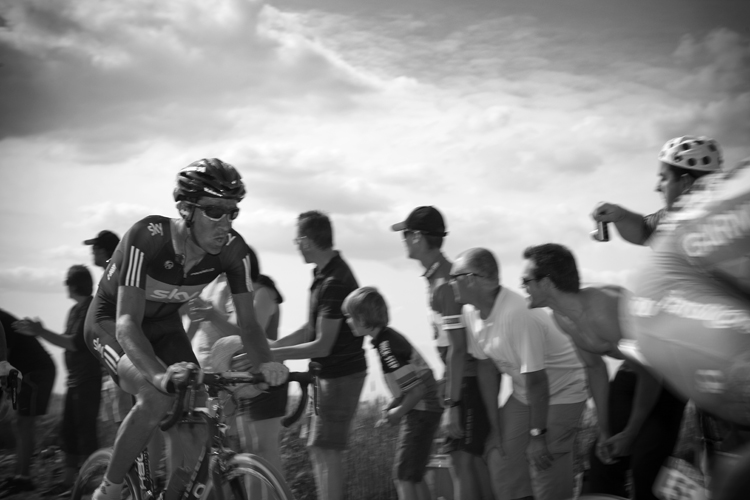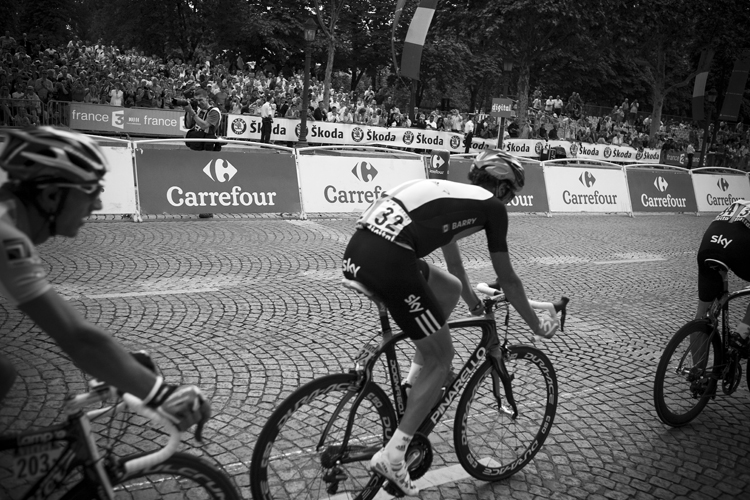This Sunday, professional cyclists will compete in the 2021 Paris-Roubaix classic. With severe rain and wind in the forecast and kilometres of cobbles, it is bound to be a dramatic race. Michael Barry, who raced for 16 years on World Tour teams and completed Roubaix multiple times reflects on the event.
Paris Roubaix is a race of unknowns. What the riders can’t control, what looms in their futures, haunts them until the pop of the starter’s pistol. In the days prior to the race, they’ll check the weather repeatedly. Some will hope for rain so that the peloton is tamer and thins out quickly, while others will pray for sun so that the cobbles will be dry. The race is one of attrition, position, and luck. It requires preparation, mental resilience, and physical strength. It will create champions. It will shred skin, bruise, and break bodies. It will fuel dreams. It will inspire.
The night before, and on the bus heading to the start, the riders’ demeanor will be unlike any other race. Every rider knows his body will be pummeled by the race. The question is, how badly?
Finished Rider. Paris-Roubaix, 2009
Some sit silently in the team bus with their headphones on, trying not to think about the race, but thinking only about the race. They know that the event could change their lives for better or for worse. The world will be watching from the roadside and over the airwaves. The history of the race, its difficulty, the challenge, the heroism has infused every riders’ dreams since their first races as schoolboys. But, they also know that crashes on the cobbles, or in the mad dash through the small northern towns, can be career ending. They know that the training and mental preparation can quickly come undone with one unlucky flat tire or broken bike.
In the days preceding the race, they will have ridden the toughest sections of pavé; some will have attempted to memorize the route, the lay of the stones, where the worst sections are and how to approach them, or avoid them, by riding in the gravel gutter alongside the cobbled road. They will have trained for several days on their specifically designed bikes. The tire pressures will have been set to the ideal for their body weight. The larger diameter, specially-designed latex tubulars, which lose air slowly during the race, will be pumped up slightly harder than desired at the start. The aim for them is to be at the ideal pressure by the time the riders reach the Arenberg Forest, which is where the race becomes a relentless succession of the roughest cobble sections with little recovery or chance to make up lost ground between them. With lower pressure, they’re less likely to puncture, have better tractions on cobbles, especially if they are wet, and bounce less. Ultimately, this gives them more control.
There will be a few teams on the start line who have no desire to race. The UCI regulations mandate that all World Tour teams start World Tour events. Spanish and Italian teams who don’t have the passion for this type of event or the riders to win, or even perform, simply show up to start. They are often ill prepared for the race without specific equipment. They’ll have shown up the day before and won’t have pre-ridden the course. Their riders may try to make it into the first breakaway of the day, on the smooth tarmac, but most will be resigned to the fact that they won’t make it beyond the midway point of the race.
Experience is as valuable as fitness in Paris Roubaix. Those who know the course, who know the right moment to surge ahead to be in the front of the peloton, and who have raced into the finale for the victory can rely on their knowledge to carry them a long way. Timing is everything. The race is tough enough that a rider who misuses his energy will pay dearly towards the end of the day — every effort has to be gauged. A rider who waits too long in the belly of the peloton, and doesn’t race for the front in a dire moment before a technical cobbled sector, may never see the front of the race again even though he might have the legs to win. Attack too soon, and you’re swallowed up and spat out. Leave it too late, and the race is done.
Over the last twenty kilometers, the peloton is in pieces, as are the riders. Some sit in the slipstream, unable to take a turn, their bodies beaten up. Others push on, feeling the burn in their legs and hoping that they’ll catch groups in front. Riders drop off from the small groups depleted, bonked, mentally and physical unable to hold the pace. For many in the group, the goal is no longer to achieve a result but only to finish and to feel the warmth of a shower over their aching shoulders.
I remember a team meeting, the HTC Columbia directeur sportif, Brian Holm, mapped out the plan for the day. The riders sat quietly and listened closely. We each had our role. With the race book in his hand open to the route, with all of its 27 highlighted cobbled roads, he gave us one last piece of advice: Never give up. If you crash, get back up and keep going. If you’re dropped, keep going. If you puncture, keep going. In Roubaix, you never know what will happen. And, regardless whether you’re in the front or dropped, crossing the finish line in the velodrome is like nothing else you’ll ever do in your life.
This article was originally published on Competitive Cyclist in 2014




